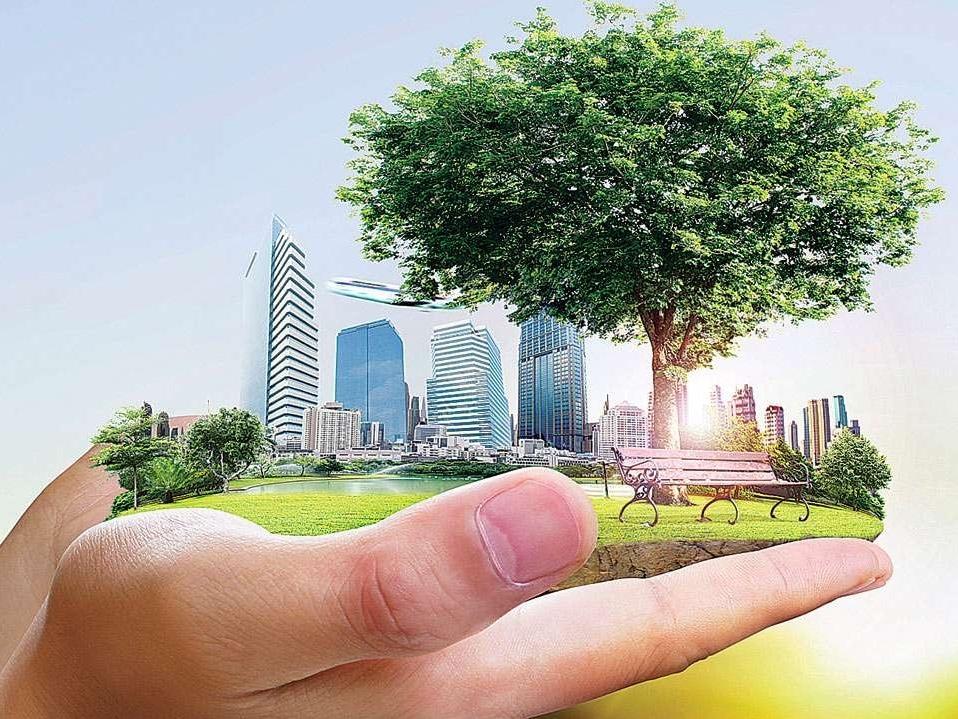Sustainability and Real Estate

The focus on energy efficiency and sustainability in real estate has become a top priority for buyers, sellers, and developers alike, reflecting a growing awareness of environmental impact, energy costs, and health considerations. As climate change and rising energy expenses increasingly impact daily life, real estate stakeholders are adapting to demand more sustainable, energy-efficient properties. This trend spans residential, commercial, and mixed-use developments and encompasses everything from green building materials to smart home technology. Here’s an in-depth look at how energy efficiency and sustainability are reshaping the real estate landscape.
1. The Market Demand for Energy-Efficient Homes
Homebuyers are now prioritizing sustainability features, with an increasing number considering energy efficiency as essential rather than optional. In a 2023 survey by the National Association of Home Builders (NAHB), nearly 80% of homebuyers reported that energy-efficient features are highly desirable in a home, particularly in the face of volatile energy prices. Buyers see value in lower utility bills, but they’re also increasingly aware of their environmental impact, preferring homes that minimize carbon footprints through better insulation, energy-efficient windows, and renewable energy sources like solar panels.
This preference for energy-efficient homes has influenced property values, as homes with sustainable features often command higher prices. Homes certified by green building standards like LEED (Leadership in Energy and Environmental Design) or ENERGY STAR typically enjoy price premiums and tend to sell faster than comparable non-certified homes.
2. Sustainable Building Materials and Practices
Developers are responding to demand by incorporating sustainable building materials and practices into new construction. Sustainable materials—such as recycled steel, bamboo, and low-VOC (volatile organic compound) paints—are healthier and less resource-intensive. Beyond materials, developers are adopting construction practices that reduce waste, conserve water, and improve energy efficiency in the long term.
Passive House standards, which emphasize airtight building envelopes, are also gaining popularity. Homes built to Passive House standards use significantly less energy for heating and cooling than conventional homes, contributing to both lower operational costs and reduced greenhouse gas emissions. These methods are increasingly seen in residential construction but are gaining traction in commercial real estate as well.
3. Renewable Energy Integration
Integrating renewable energy, such as solar panels and geothermal systems, has become a crucial component of sustainable real estate. The shift toward solar is particularly strong, with installations on residential and commercial buildings rising year-over-year. Solar technology can provide considerable energy savings over the property’s life, with many areas offering tax credits, rebates, and incentives that make installation more affordable.
4. Smart Home and Building Technology
The integration of smart technology in homes and buildings not only improves convenience but also enhances energy efficiency. Devices such as smart thermostats, energy monitoring systems, and automated lighting reduce energy consumption by adjusting to real-time conditions. Smart thermostats, for example, can learn occupants’ habits and automatically adjust temperatures, which can reduce heating and cooling bills by up to 15%.
Smart home systems that monitor energy usage give residents insights into their consumption patterns, helping them identify and minimize high-usage behaviors. This technology isn’t limited to residential properties; commercial buildings increasingly incorporate intelligent lighting, HVAC, and energy management systems to reduce energy consumption, creating significant savings for building owners and operators.
5. Healthier Indoor Environments
Sustainability in real estate goes beyond energy savings; it also involves creating healthier living environments. Studies show that indoor air quality, natural lighting, and noise levels significantly impact residents’ health and well-being. Many sustainable buildings incorporate features that improve indoor air quality, such as low-emission building materials and enhanced ventilation systems. This focus on a healthy environment aligns with WELL Building Standards, which are increasingly popular in both residential and commercial real estate as buyers and tenants seek spaces that promote physical and mental health.
6. Government Incentives and Policy Support
Government policies and incentives have been instrumental in driving the adoption of sustainable practices in real estate. Many federal, state, and local governments offer tax incentives, grants, and rebates to encourage property owners to invest in energy-efficient upgrades. Programs can offer as much as a 30% tax credit for solar installations or an outright grant, which can significantly reduce upfront costs.
Additionally, some municipalities have implemented green building codes that require new developments to meet specific energy efficiency standards. These policies help level the playing field, making energy-efficient homes and commercial buildings more accessible and affordable for a wider range of buyers and tenants.
7. The Financial Benefits of Energy Efficiency
For property owners, energy efficiency translates to lower operational costs and often higher property values. Research from the U.S. Department of Energy shows that energy-efficient homes can save owners up to 30% on utility bills compared to non-efficient properties.
Furthermore, studies indicate that energy-efficient homes hold their value better during market downturns. Properties with green certifications or energy-efficient features tend to appreciate faster and have shorter days-on-market periods, providing owners with both economic and environmental returns on their investment.
8. The Future of Sustainable Real Estate
Looking forward, sustainability and energy efficiency are expected to remain integral to real estate, with trends likely to expand in scope and sophistication. The continued advancement of green building technology, combined with increasingly stringent government regulations, means that sustainable properties will become more common and accessible.
One area of growth is net-zero energy buildings, which produce as much energy as they consume. With improved technology and declining costs for solar panels, wind turbines, and energy storage systems, net-zero buildings are becoming more feasible for residential and commercial properties alike. The push toward carbon-neutrality, particularly in urban developments, is expected to shape real estate trends over the next decades, as cities and governments work to meet climate targets.
Conclusion
The emphasis on energy efficiency and sustainability in real estate is no longer a niche preference but a broad market shift. Today’s buyers and tenants increasingly value properties that reduce environmental impact, lower utility costs, and provide healthier living environments. This trend has led developers, architects, and property owners to prioritize sustainable building practices and technologies that support energy efficiency.
As demand for sustainable properties grows, real estate professionals are focusing on delivering eco-friendly, energy-efficient homes and buildings that meet both current needs and future expectations. This trend will likely deepen in the coming years as both individual and regulatory pressures push the real estate industry toward a more sustainable, responsible future. For buyers, investors, and developers alike, this focus on energy efficiency is more than a trend—it’s becoming a fundamental aspect of modern real estate.

